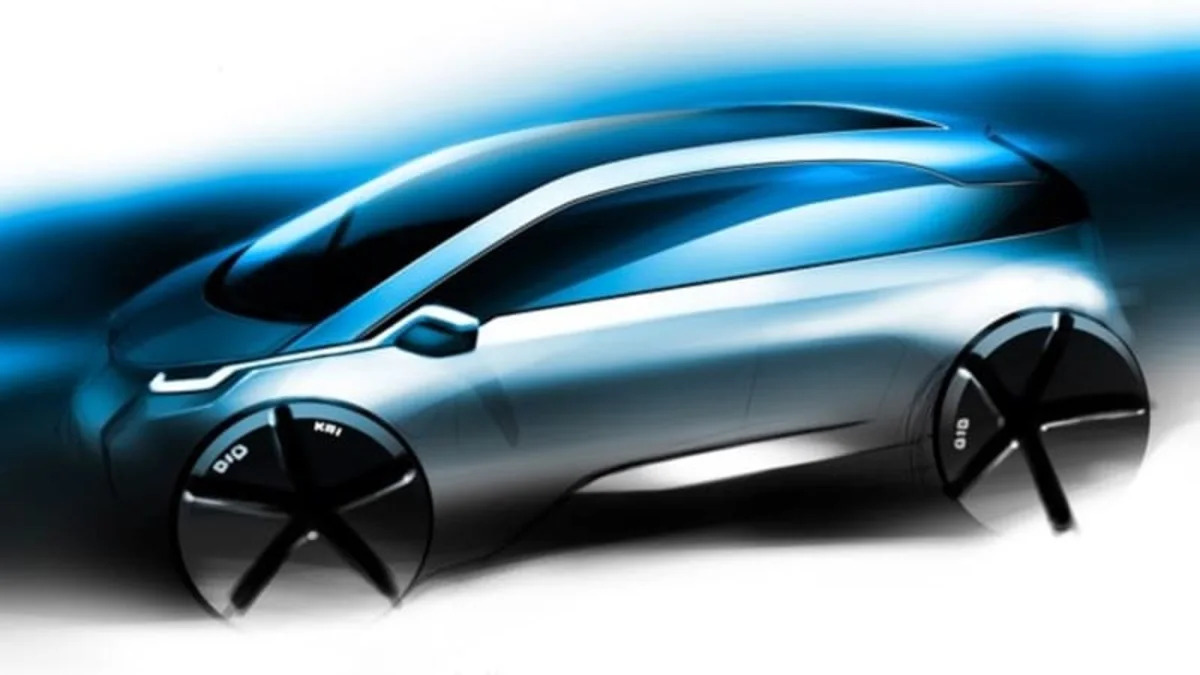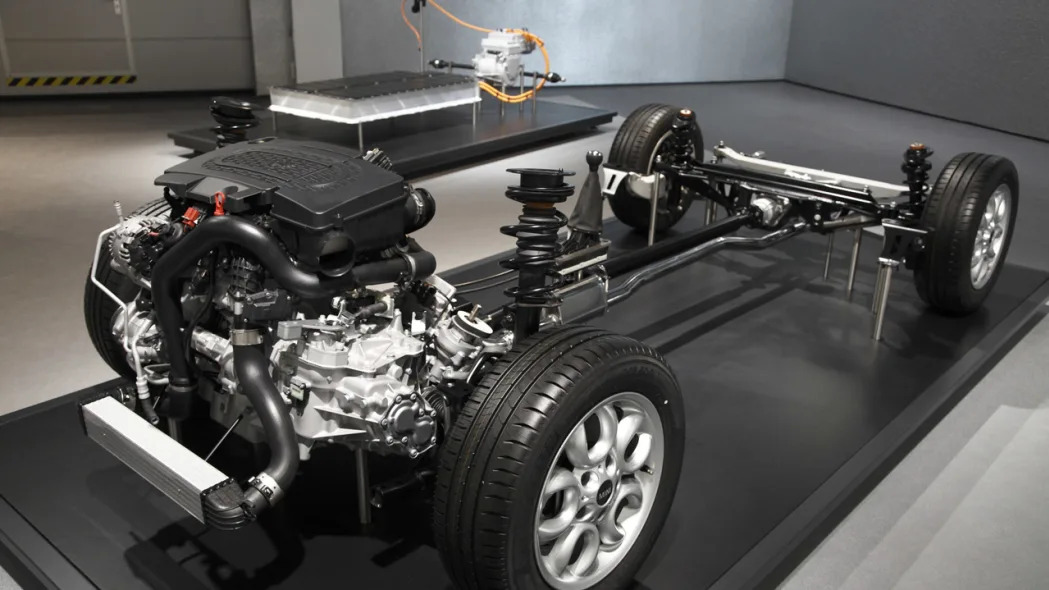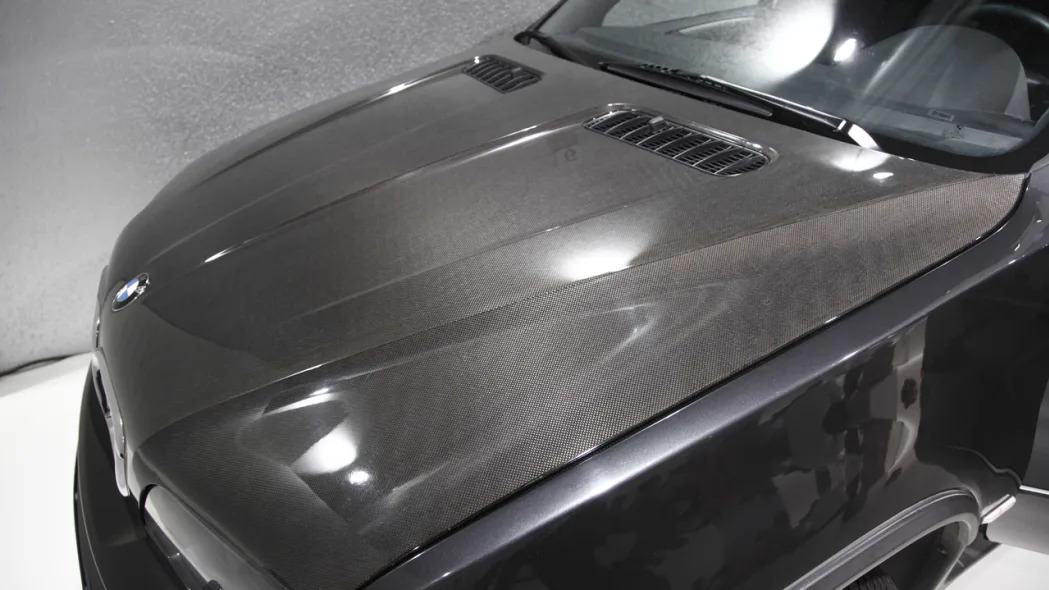BMW Megacity – Click above for high-res image
2007 was a big year for the planet. That's when, for the first time ever, more people lived in cities than in rural areas. For car companies, this global trend means finding new ways to move people around in tighter and tighter spaces. General Motors thought up the EN-V concepts and, with Segway, the Puma. Honda has the P-NUT. The current real-world king of small urban vehicles is, of course, the Smart Fortwo, which was way ahead of the curve.
More people in bigger cities leads to transportation problems like congestion and less incentive to drive a car. People want public transportation options to be expanded, and more car sharing services. But the automakers are very keen to keep selling personal mobility vehicles to people no matter where they live and, since electric cars a good fit for urban environments, it makes sense that this new breed of city cars have a zero-emission powertrain. For BMW, this all comes together in Project I, the Megacity Vehicle (MCV, above) and, maybe, a new Megacity sub-brand.
That BMW has been working on something called the Megacity Vehicle is no secret, the company officially announced the car over a year ago and, earlier this year, confirmed that it would release the car in 2013. Still, there was a lot we didn't know about the car and the project. This week, near Munich, with vehicles like the E1 (an early BMW electric vehicle), a carbon-fiber X5 and the Isetta on hand, BMW revealed an overwhelming amount of information about just what we can expect from the MCV and Project I. Read all about it after the jump.
Well before the 2007 rural-urban population shift, BMW was thinking about ways to build cleaner cars. in 2000, BMW's Board of Directors declared, "the BMW Group is pursuing sustainable development as a key principle of the corporate strategy." Adding a lightweight, battery-powered car to the luxury automaker's stable isn't a fast and easy process, especially given the high hopes BMW has for this car. The team responsible for the MCV – and BMW's shift to electric drive vehicles in general – is called Project I, which started in 2007 to "develop sustainable mobility concepts for the future." This group is also responsible for the Mini E tests and the upcoming ActiveE field trials that will start in 2011.

BMW ActiveE concept – Click above for high-res image gallery
Precursors: Researching the Megacities
Before starting to think about the Megacity vehicle itself, BMW tried to figure out what kind of vehicle people in cities would even want. To do this, BMW conducted interviews and did market research in megacities, that is, urban areas with more than six million people, around the world – places like Los Angeles, Tokyo, London, Paris, Barcelona, New York and the Ruhr Valley area in Germany. Some of those megacities, LA and the Ruhr Valley, have an affinity for private vehicles. In Mexico City, people said they liked their personal vehicles because they offered a place of safety. In other megacities, though, people are fairly car averse, in part due to excellent public transportation. Tokyo, for example, has a large population of young people (18-22) who don't even have a driver's license; Shanghai has excellent integration of private and public transportation with a focus on sustainable options. How do you build a car for all these people? You get to know them.
BMW's in-house research identified three broad customer types who live in megacities: those who are driven by responsibility, economy and lifestyle. Any individual person can be placed somewhere in a Venn diagram made from these categories, but BMW believes these are the three main customers the MCV could appeal to. On top of these types, BMW identified some "mega-trends" among people living in megacities (it was at this point we realized we were glad BMW didn't call Project I the Mega Project): they are searching for new solutions for mobility, they perceive the impacts of climate change, the political realities are changing and that everything needs to be more efficient. At the end of the process, the Project I team realized, they didn't just want an electric car but a new way of doing things.
Mini E and ActiveE lead the way
BMW has a 38-year history with electric vehicles (EVs). The first was a BMW 1602 with a lead acid battery that was presented in 1972. The company's electric vehicle technology can be found today in the ActiveHybrid X6 and 7 models, but the cars that will most influence the MCV are the Mini E and the ActiveE.
As we know, the Mini E (and upcoming ActiveE) programs are intended to teach BMW how people use electric cars. Both of these vehicles are converted ICE models, so they're heavy and not ideal for EV use. To build the Mini E, BMW also needed to buy a lot of the powertrain components from outside sources (like AC Propulsion) and so the Mini E's performance, while still go-kart-like, is not as clean as it could be. The power train in the ActiveE will be an early version of what we will eventually find in the MCV.
Project I leader Ulrich Kranz said (through a translator, as all quotes in this article are) the Mini E tests are "extremely valuable," something we also heard from BMW USA earlier this year. To learn more, BMW is shifting the Mini E trials to France, Japan and China next year.
What was learned thus far? Most of the Mini E applicants were well-educated and well-off males over 35 with an affinity for new technology. Applicants cited the chance to experience a new and clean technology as a main reason why they were interested in driving a Mini E. BMW heard from them that lower vehicle running costs were not very important – which makes sense given the cost of those Mini E leases. Once granted the cars, most drivers used the Mini E as a second vehicle and for the daily commute. For the record, here are some discoveries and facts about the Mini E program:
- Longest trip in a Mini E to date was 158 km (98 miles)
- In Berlin, when the average Mini E was being charged, it remained stationary for over five hours in 80 percent of the cases and most of the customers only charged their vehicles only two or three times a week. Americans were more likely to charge up every night.
- The U.S. fleet was made up of 450 units, with 246 private and 204 fleet users.
- Vehicle usage of the Mini E only differs marginally from that of comparable Mini Cooper and BMW 116i trips.
- Before the test, drivers said they expected range and charging time limitations to be a problem. During the actual experiment, these were only felt to be limitations in very few specific cases.
- The data collected indicates that a Megacity Vehicle with a slightly longer range (150-200 kilometers) and with expanded interior space would meet virtually 100 percent of the mobility needs of city dwellers.
This will be Sandra Krommes' job. Krommes is BMW's head of environment and mobility, a role that puts her at the intersection of a lot of issues: CO2 regulations, peak oil and, of course, electric vehicles. Krommes said that BMW knows cars and road transportation are not the only causes of increased CO2 levels – and that they therefore don't represent the only solution to lowering those levels – but they do play a role. Some of the social trends pushing BMW towards plug-in vehicles were noted above. Krommes deals more with the political pressures, which might be even stronger.

BMW Isetta and E1– Click above for high-res image gallery
Take, for example, peak oil. Krommes used a peak oil chart in her presentation that showed the peak coming around 2025 or a little before then. Everyone knows peak oil is coming, but now we know the timeline BMW (or, at least, some people within BMW) is operating under. On top of peak oil, BMW forecasts regulators will force around a 25 percent drop in global CO2 emissions by 2020 from 2008 levels, and believe this is where e-mobility comes in. BMW wouldn't let us take pictures and wouldn't share the chart with us, but Krommes presented us a slide that showed that, given the current and near-future European electricity production mix, the only vehicle powertrain that can make a significant reduction in the amount of energy required to move the car and to the amount of CO2 emitted is electric drive. Even hydrogen cars that get their H2 from wind energy might use more energy than is standard, but that option does firmly fit in the lower-CO2 emissions category.
Even with all of these factors creating a space for EVs to thrive, success is not guaranteed, at least not in the short term. Krommes noted the standard problems like battery weight (her slide said that to get 100 kilometers of range, you need 80 kilograms of li-ion batteries, 175 kg or NiMH and roughly the equivalent of five Andre the Giants of lead acids) and then said that, "In 2020, the proportion of new registrations for electrified vehicles [including plug-in hybrids and pure electrics] is estimated at five to 15 percent" That's covering the bases with a pretty wide spread, isn't it? Whatever the real numbers ends up being, five to 15 percent is enough to make a series production car like the Megacity worth it, she said. Also, Krommes said that BMW, "wants to be the leader of the premium segment of e-vehicles." She wouldn't give a market share target that BMW is shooting for, but the impression was that Nissan can have the mass market, while maybe Tesla, Tesla and Fisker will need to watch out.
The Megacity Vehicle
All of this leads us to the Megacity Vehicle. Well, it doesn't lead us there quite yet. While BMW did release the sketch you see at the top of this post, representatives told us that they can't show us the car quite yet – they're not even sure what it'll look like exactly. Here's what we do know.
The Megacity, arriving in 2013, will be a purpose-built, four-seat electric car with a rear-mounted engine and rear wheel drive. Some of the ideas behind the car are connectivity, sustainable materials and tailor-made services. It will be taller than similar small cars, and it will feel and looks (and be) solid. There is no chance the MCV will have a swappable battery. The car's lithium-ion battery pack will have active cooling because BMW engineers learned with the Mini E that air cooling makes keeping the batteries at their optimum temperature range too difficult. Another lesson from the Mini E: the Megacity will have "usable trunk space."
BMW isn't completely sure that the electric drive system they showed off in Munich will be exactly what is used in the Megacity, but most likely all the parts will be very similar. This means the Megacity will have a very lightweight powertrain with the batteries at the bottom (see Life Drive, below). The core of the power train is the 96 li-ion cells connected in series, each with an operating range of 2.8 volts to a little over 4 volts. There are eight 12-cell modules, each rated at 44.5V per pack. BMW wouldn't give us the exact amount of energy the pack can hold, but Patrick Müller, the powertrain project manager for the MCV, told us that the car will use a lot of the battery's capacity, much higher than the 50 percent that GM uses in the Volt/Ampera's 16 kWh pack. Also, BMW will use the hybrid synchronous motor in the ActiveE and in the MCV. (All this describes the first MCV, but we heard that BMW is considering building a liquid-engine version at some point.)
The MCV will also be BMW's first volume production vehicle to make extensive use of carbon fiber reinforced plastic (CFRP) in both the structure and body panels. CFRP is a composite material made of carbon fiber and plastic matrix. CFRP is strong and 30 percent lighter than aluminum, 50 percent lighter than steel. Because of these reasons, BMW calls CFRP "an enabler of electric mobility."
BMW first introduced CFRP in 2000 in the Z8 concept car. Not long after that, BMW began using the material in motorsport racing, then aircraft and is now moving into mass production in various ways in BMW's standard automobile lines, starting with an outer shell application in the M3 in 2007. It was also used in the Hydrogen 7. BMW's global CFRP production process is now coming on line through a joint-venture with SBL ACF in Moses Lake in the U.S. and at its own plants in Wackersdorf and Landshuh/Leipzig, Germany.
Seven years ago, BMW made an X5 entirely out of carbon fiber. The concept was never shown to the public, but it has been driven 40,000 kilometers and undergone high-speed testing. While expensive, the concept is a full 200 kilograms lighter than a standard X5. The MCV will gain similar benefits from CFRP and, like on the X5 concept, we will probably see bare carbon fiber on the MCV.

BMW Carbon Fiber X5 Concept – Click above for high-res image gallery
Decisions about just how the MCV will integrate carbon fiber – and the rest of the design decisions – are being driven by two ideas: Life Drive and Next Premium. These corporate phrases define the way the car is built (Life Drive) and the impression BMW wants to give with the MCV (Next Premium).
Life Drive meets Next Premium
Life Drive defines the vehicle's architecture, which features an aluminum space frame with the energy storage system (battery) built in on the bottom and the carbon fiber structure with outer skin placed on top. As you can probably imagine, it's not too difficult to create a variety of models using this system. Here, too, lessons from the Mini E program are being applied. BMW learned that rear-wheel drive has performance benefits for electric cars, including better interior packaging, better traction and better crash performance. Also, without an engine or motor up front, the front wheels can turn more freely and give the car a tighter turning radius.

MCV battery and powertrain components – Click above for high-res image gallery
Next Premium is BMW's way of saying it wants people to think of a blend of luxury and ecology. Basically, you'll pay more for a product with less impact. BMW said Next Premium is influenced by:
- The quiet life
- Calming aesthetics
- Good life over fast life
- Quality vs. Quantity
- Well-being
- Premium
- Clever
- Clean
- Light and safe
- Regenerative driving pleasure
- Irresistibly future oriented
With all of the technical detail thrown at the walls around us during our visit, the main message of the day still came shining through from pretty much every BMW representative: you will love BMW's electric drive vehicles. You may not know it yet, but you will.
BMW is confident that anyone who gets behind the wheel of any of the Project I vehicles – the Mini E, the ActiveE or the Megacity Vehicle – will not concern themselves with CO2 regulations or the number of volts in each cell. Instead, as Müller said, "We don't want to lose the sheer driving pleasure."
BMW believes its electronic-drive line-up has a distinct competitive advantage thanks to three components. The first two are pretty easy to identify on paper: efficiency (outstanding consumption figures, lightweight design) and responsibility (sustainable driving). The last one, joy, is only going to be possible from behind the wheel. Müller said the company wants the Megacity Vehicle to be "the BMW drive among electric drives." We'll be waiting for a chance to find out if the Project I team manages to live up to the task.
Our travel and lodging for this media event were provided by the manufacturer.





Sign in to post
Please sign in to leave a comment.
Continue